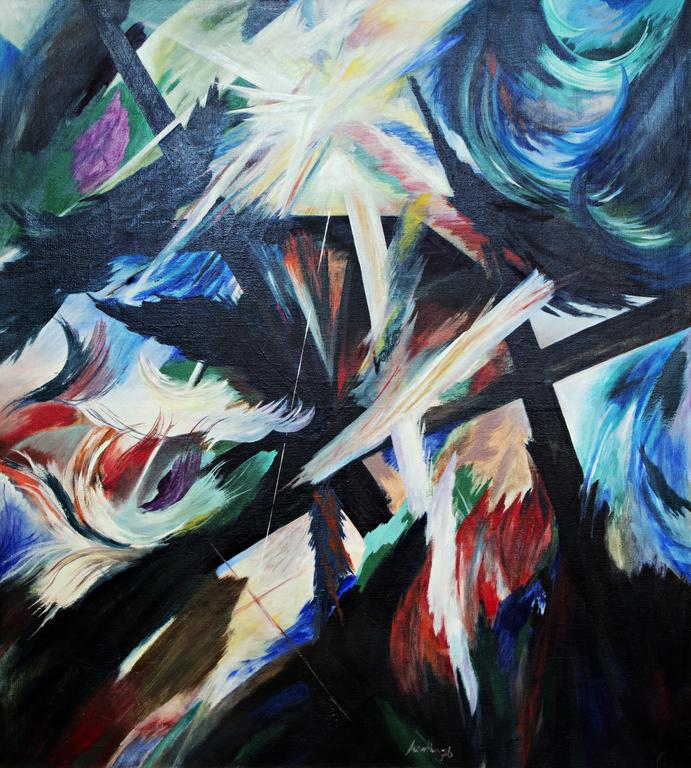Martin Rabe: Die stürzenden Kreuze von Golgatha, 1976 (The Falling Crosses of Golgotha)

Oil on canvas, 112 x 122 cm
"And he carried his cross and went out to the place called the place of skulls, which is called in Hebrew, Golgotha." This is reported by the evangelist John in chapter 19, verse 17 (version: Luther Bible 1912).
"He" is Jesus Christ, the Messiah, who according to Christian faith was crucified there together with two other condemned persons. The Roman occupiers of Judea had planned the cruelest execution method of their time for him. For the man who was regarded by some as the Son of God, who announced the coming Kingdom of God and called himself King of the Jews, literally challenged the political and religious power of the Roman "deified" emperor. Especially in rural provinces, Christianity found its way into the population and became a growing problem for the Roman authorities, who reacted to it with brutal severity. The crucifixion of Jesus at the execution site of Golgotha, then located outside the city of Jerusalem, inspired countless artists. It is one of the central myths of the Christian faith. Martin Rabe's painting thus joins a long tradition. It is only at second glance that the three crosses in his painting reveal themselves to the viewer, which corresponds to his typical painting style: bright colours, which in sometimes swirling, sometimes torn forms are only laboriously tamed here.
Rabe transforms the archaeologically proven, bare and grey-brown Golgotha quarry into a sea of contrasting colours, in which the elements fire, water, air and earth perform a wild dance. The elemental forces of nature rage darkly and inexorably across the crucifixion scene, devouring everything in their path. Here too, Rabe uses biblical motifs, which he presents in a modern way. The evangelists tell of darkness that came with the death of Jesus, an earthquake in which the rocks split and that the curtain in the Jewish temple was torn apart. The conclusion: "When the captain who faced Jesus saw him die in this way, he said, 'Truly this man was the Son of God. (Gospel of Mark, chapter 15, paragraph 39).
Frenzied elements in ancient times often proclaimed a divine judgment and the end of the existing world: Just like rabbinical and Hellenic-Roman sources, the Old Testament reports darkness at the death of outstanding personalities. In the Old Testament and in the apocalyptic expectations of Judaism, the destruction of the Temple of Jerusalem is one of the central events of the judgment of God. In this context, the tearing of the curtain in the temple, behind which the holyiest of holies was hidden from the world upon pain of death, represents an unprecedented event of unforeseeable consequences.
Martin Rabe's studies took him to Stuttgart and Vienna: painting, plastination and art history were on the curriculum. The versatile Martin Rabe also studied theatre and stage design, literature and music. He published books, including a history of art of Europe and the series "Illustrated Classics of World Literature".